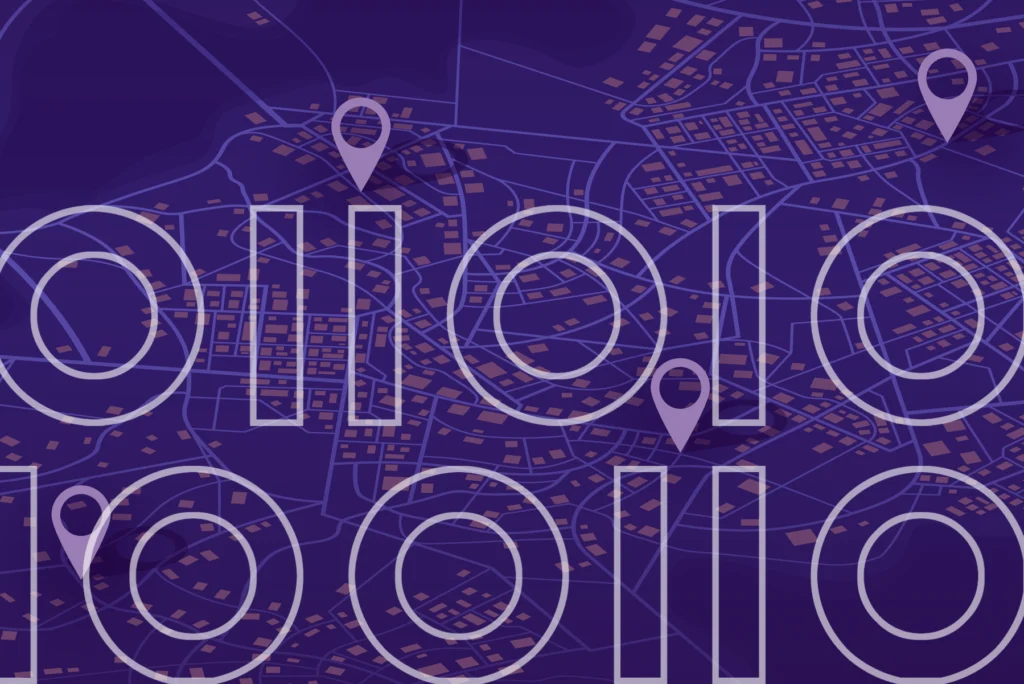One of the most difficult data challenges that organizations face is compiling an accurate, current, and correctly formatted dataset of customer addresses and their associated geocodes. We call this geo addressing and it is an essential step before you can tackle any number of business processes, including:
- Invoicing
- Compliance-related customer communications
- Direct mail marketing to your customer base
- Fulfillment and shipping
- Location mapping
- Route planning
- Service or infrastructure planning
- Database joining
- Risk analysis
- Property valuations
- Market analysis
Also challenging? Ensuring those addresses are consistent across every business system that stores customer information, from customer relationship management to accounts receivable. And if you do business globally, the complexity increases exponentially.
What is an address?
We all know what an address is. This shouldn’t be complicated. You invite someone to your home, travel to client meetings, attend an event with friends and in each case, you share address information as a way to connect. But our human reasoning ability automatically parses through information to help us use that address to get us to where we need to be. When we look at the different pieces of an address, the rules needed to work with this data are complicated and require sophisticated matching algorithms to make them usable in business processes, especially for addresses spanning multiple countries.
So, what makes working with address data so challenging? An address is a collection of data. It can be used to send a parcel through the mailing system, to ship a package, apply for a mortgage, add internet service, or to tell a friend the location of where to meet for dinner.
Read our eBook
The 6 Capabilities You Need in a Geo Addressing Solution
Learn more about address verification, geocoding, and data enrichment capabilities that unlock unparalleled levels of data context – an essential component of data integrity
Addresses can be categorized as mailable, deliverable and serviceable
Mailable – this type of address is simply for mailing systems. It may be a post office box, a cluster box, a stand-alone mailbox at the corner of a rural route, etc. It is generally where one may send an invoice, mail marketing, banking statements, or friendly correspondences. A mailable address does not need to have a latitude/longitude location tied to it. It’s based on the postal system of a country.
Deliverable – this type of address is where a package may be delivered. Think of a farmer who would receive parcel mail (mailable) at his home but may need replacement parts for his tractor delivered to his barn. A deliverable address is more about the location. Precisely’s geo addressing capabilities can validate the address against a latitude and longitude. Global delivery agencies such as DHL, FedEx and UPS need to know the deliverable address. It is the location where they need to deliver a package.
Serviceable – this type of address is where you may need services to be provided including telecommunications, utilities, and construction. This address could be a suite, apartment, or other location in a building where telecom equipment will be installed, a structure such as a barn on farmland that needs electricity hooked up, or a construction site that has not yet been assigned an address.

Why are addresses hard?
Address correctness often goes right back to the source: a human typing an address into a computer system. Humans make typing and spelling mistakes, or leave information out, or may not use the correct abbreviations according to postal standards.
Adding to the complexity is that address formats and data elements vary widely from county to country. In France, the words “SAINT” and “SAINTE” are abbreviated to “ST” and “STE”. In the United States, “ST” is the abbreviation for Street and “STE” is the abbreviation for “Suite”. In India, addresses use four levels of localities. Argentina recommends the following symbols should be avoided: full stop (.), dash (-), accents (‘), (“), (°) and parentheses ((,)); whereas in Mexico, accents (‘) are used regularly and in Singapore, dashes (-) are recommended to identify the floor and apartment number.
Another element to consider is the freshness of your address data. In the United States, for example, 17% of people will move every year. Of these, only 60% will tell the U.S. Postal Service about it at the time of the move. It’s unlikely they will tell you – which translates into data decay. Your data accuracy is also impacted by changes in addresses themselves, whether from new street names, E-911 updates, or changes to the postal code system.
Geo addressing: a single source for address autocompletion, verification, and geocoding
Precisely’s geo addressing innovations, including enhanced address autocompletion, sophisticated matching algorithms for address verification, and hyper-accurate geocoding, are designed to help companies easily verify, cleanse and geocode address data in enterprise business systems such as CRM, billing, ERP, workforce management and more.
The global reach of our market-leading capabilities is also being expanded through availability of Master Location Data. These definitive datasets include unit numbers within multi-dwelling units and office complexes, as well as addresses delivered to by national couriers, addresses from emergency services, and many more. Alternate addresses and historical addresses are also included to enhance matching accuracy. Frequent updates to our reference data make it easy for you to keep data current.
Address verification will standardize and verify addresses globally against Precisely’s robust engines and postal databases. It can be used to improve deliverability, simplify compliance, and enhance customer engagement. You can do this one address at a time, or batch process millions of addresses to create your own validated customer address database.
Address autocompletion helps companies eliminate those human errors at the source by returning a suggested list of complete addresses based on partial address keystrokes. You can add autocomplete to any local search, checkout, shipping, or billing experience on your website or integrate it with your business applications.
Our address autocomplete solution uses reverse IP address lookup to identify the user’s location. This improves the accuracy of address capture and provides users with accurate address options based on the fewest characters entered. Customers simply select the correct address from the list and your data fields are automatically populated with the correct address elements. As well as improving accuracy of your address data, address autocomplete provides a better customer experience and a smoother customer journey.
Geocoding does two things: it assigns location coordinates accurate down to unit level and attaches a unique and persistent identifier, the PreciselyID, to each address. Using the PreciselyID to operationalize an address, you can begin to analyze the data for even more powerful insights. The PreciselyID also connects your addresses with our data enrichment portfolio of over 400 datasets containing more than 9,000 attributes.
Read our eBook The 6 Capabilities You Need in a Geo Addressing Solution and learn more about address verification, geocoding, and data enrichment capabilities that unlock unparalleled levels of data context – an essential component of data integrity.







